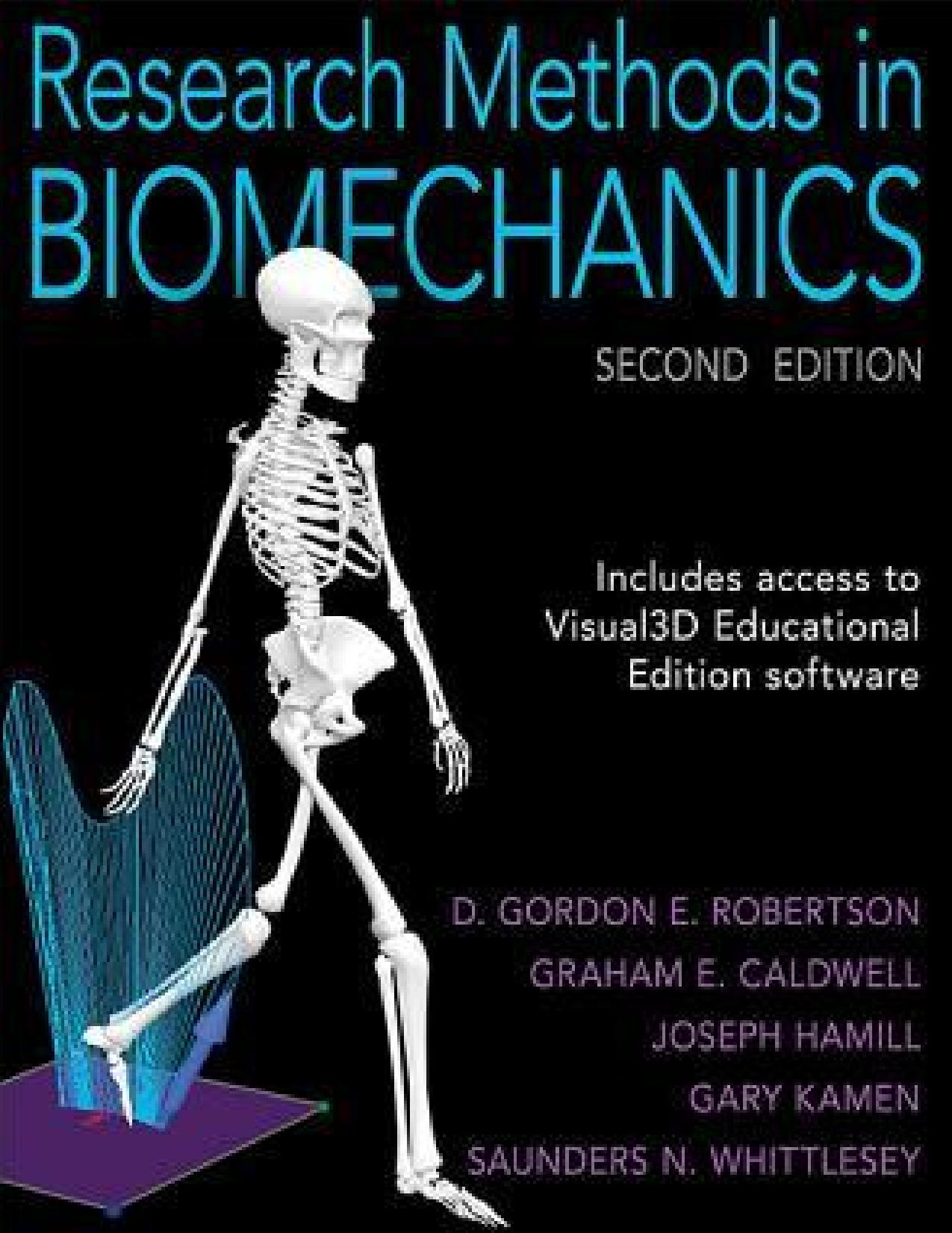Research Methods in Biomechanics 2nd Edition by D. Gordon E. Robertson
$70.00 Original price was: $70.00.$35.00Current price is: $35.00.
Research Methods in Biomechanics 2nd Edition by Gordon Robertson, Graham Caldwell, Joseph Hamill, Gary Kamen, Saunders Whittlesey 0736093400 978-0736093408
Instant download Research Methods in Biomechanics 2nd Edition by D. Gordon E. Robertson pdf, docx, kindle format all chapters after payment.
Product details:
- ISBN 10: 0736093400
- ISBN 13: 978-0736093408
- Author: Gordon Robertson, Graham Caldwell, Joseph Hamill, Gary Kamen, Saunders Whittlesey
Research Methods in Biomechanics, Second Edition, demonstrates the range of available research techniques and how to best apply this knowledge to ensure valid data collection. In the highly technical field of biomechanics, research methods are frequently upgraded as the speed and sophistication of software and hardware technologies increase. With this in mind, the second edition includes up-to-date research methods and presents new information detailing advanced analytical tools for investigating human movement. Research Methods in Biomechanics, Second Edition, assists readers in developing a comprehensive understanding of methods for quantifying human movement. Parts I and II of the text examine planar and three-dimensional kinematics and kinetics in research, issues of body segment parameters and forces, and energy, work, and power as they relate to analysis of two- and three-dimensional inverse dynamics. Two of the chapters have been extensively revised to reflect current research practices in biomechanics, in particular the widespread use of Visual3D software. In part III, readers can explore the use of musculoskeletal models in analyzing human movement. This part also discusses electromyography, computer simulation, muscle modeling, and musculoskeletal modeling; it presents new information on MRI and ultrasound use in calculating muscle parameters. Part IV offers a revised chapter on additional analytical procedures, including signal processing techniques. Also included is a new chapter on movement analysis and dynamical systems, which focuses on how to assess and measure coordination and stability in changing movement patterns and the role of movement variability in health and disease. In addition, readers will find discussion of statistical tools useful for identifying the essential characteristics of any human movement. The second edition of Research Methods in Biomechanics explains the mathematics and data collection systems behind both simple and sophisticated biomechanics. It assists both beginning and experienced researchers in developing their methods for analyzing and quantifying human movement.
Table contents:
Part I. Kinematics
Part II. Kinetics
Part III. Muscles, Models, and Movement
Part IV. Further Analytical Procedures
People also search:
what major instruments are used in biomechanics research
biomechanics method
what are the branches of biomechanics
what is a biomechanical strategy
research in biomechanics


